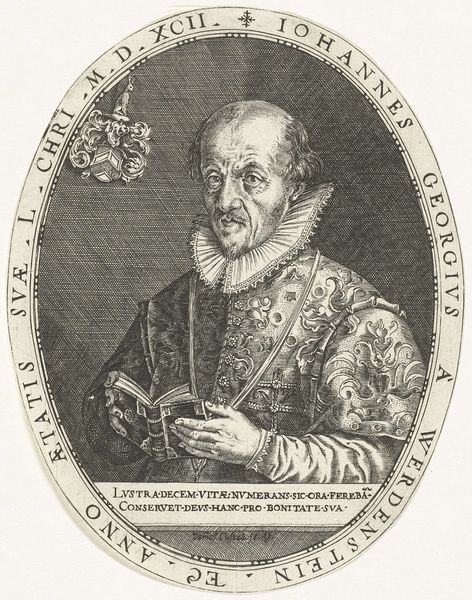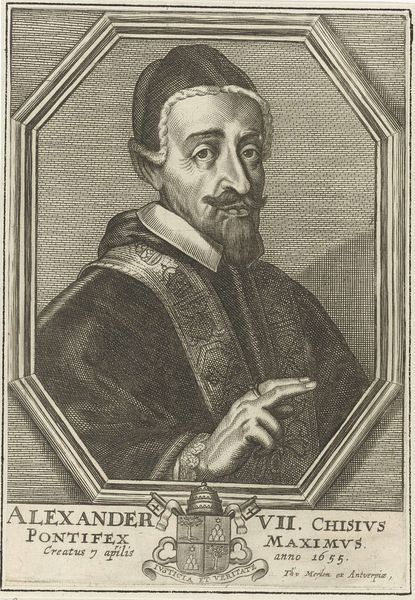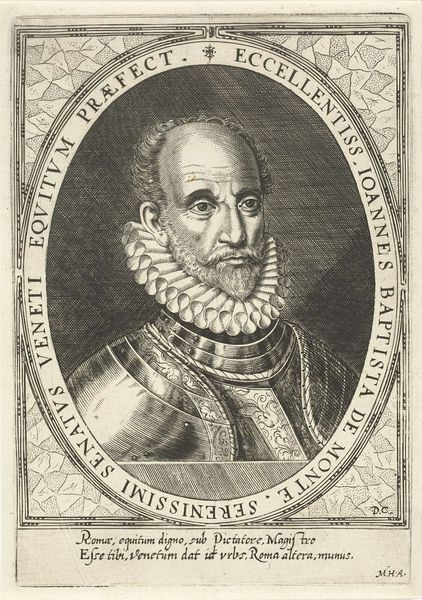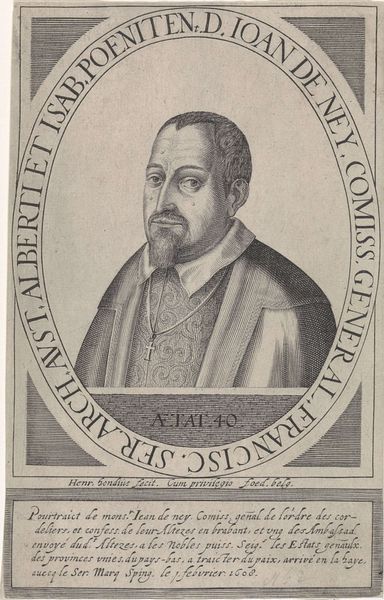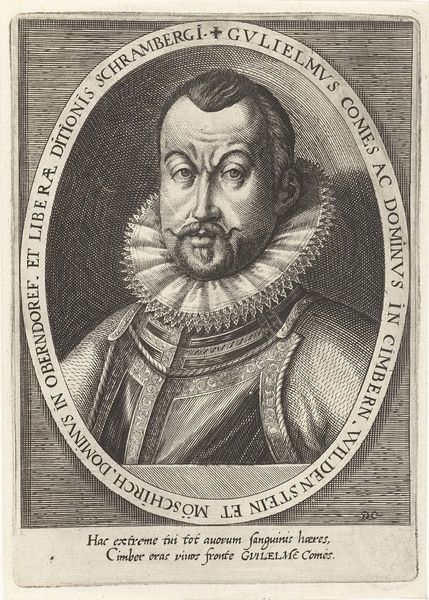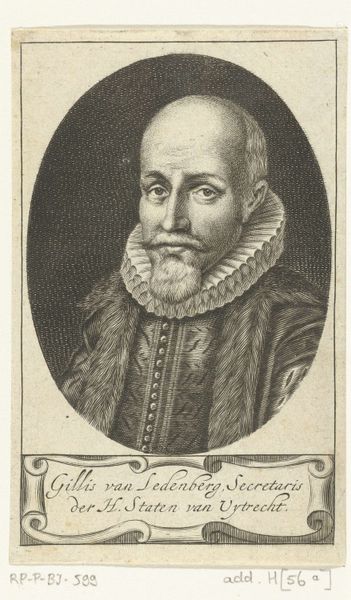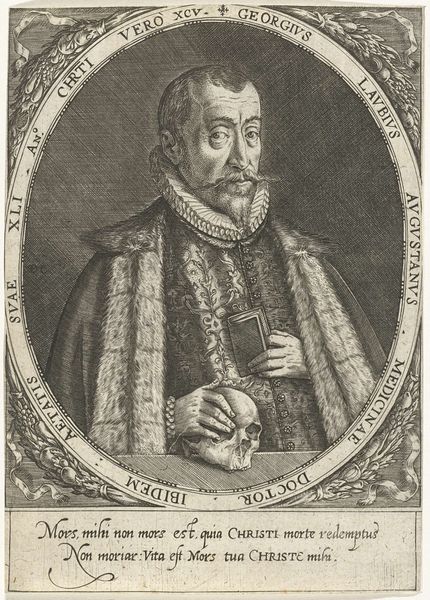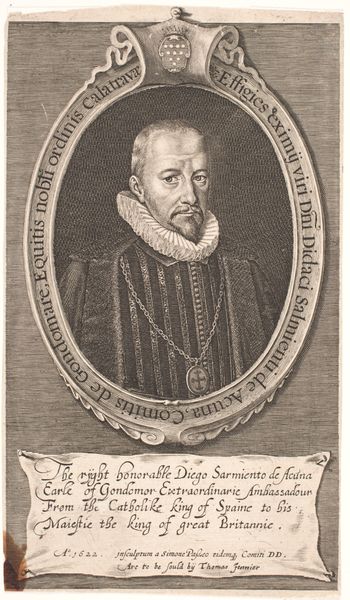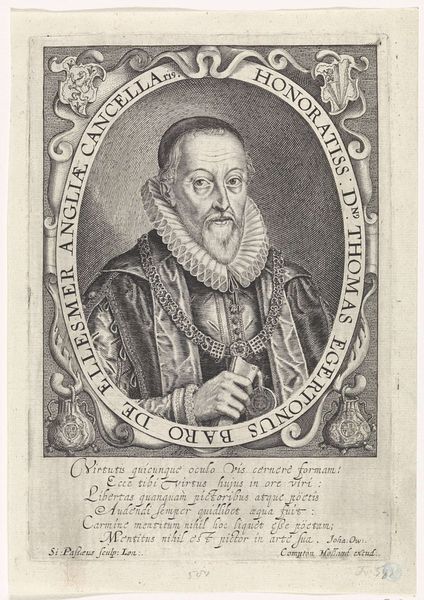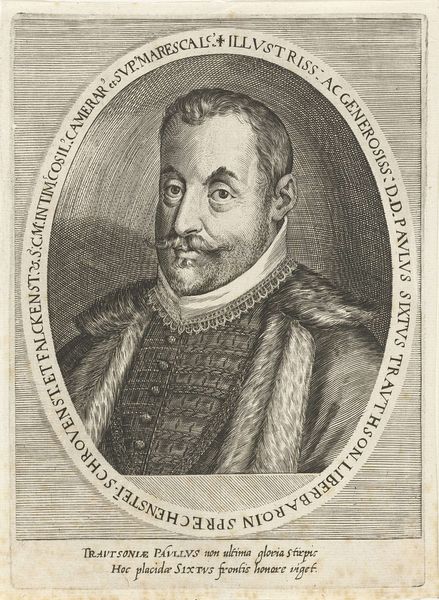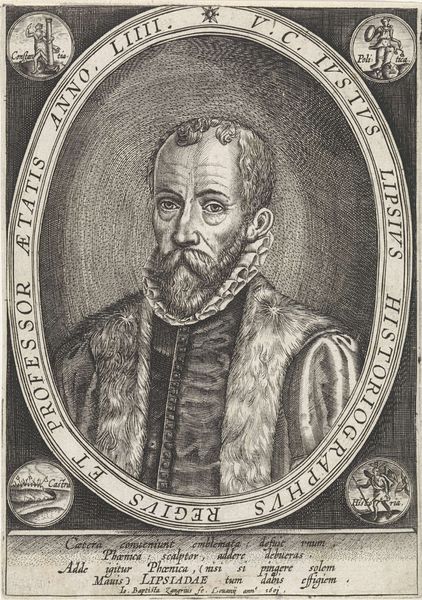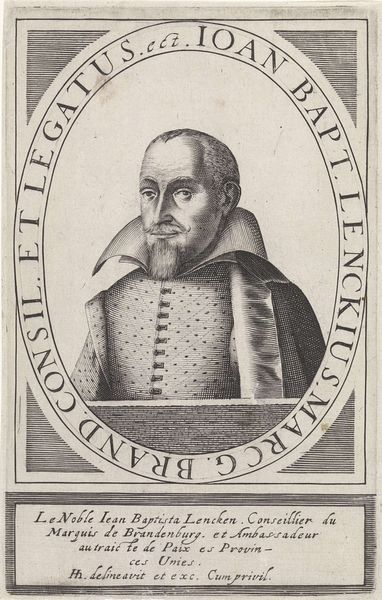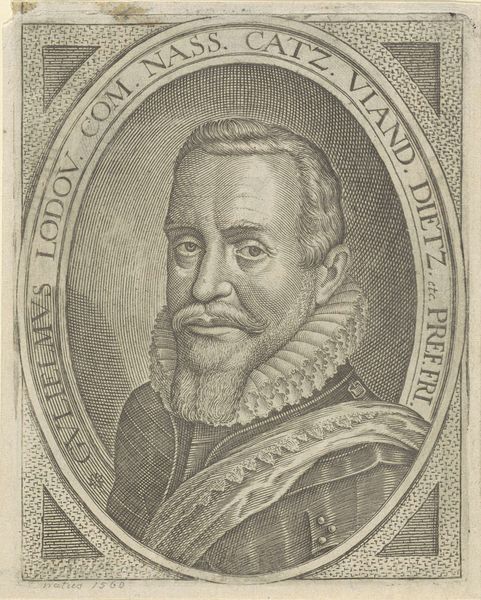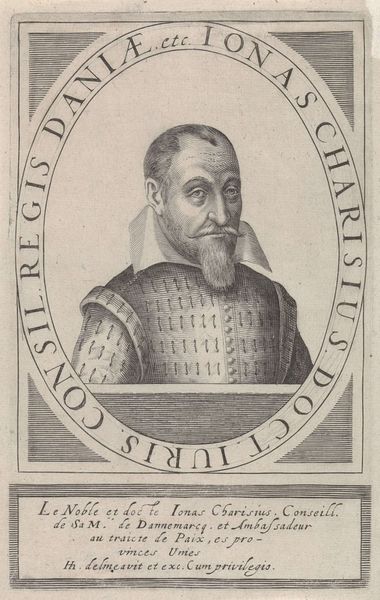
engraving
#
portrait
#
baroque
#
old engraving style
#
portrait reference
#
line
#
portrait drawing
#
engraving
#
columned text
Dimensions: height 134 mm, width 104 mm
Copyright: Rijks Museum: Open Domain
Editor: Here we have Pieter Feddes van Harlingen's "Portret van Joachim Hopperus," an engraving from around 1611-1623. It's interesting how much detail they managed to get with just lines. What catches your eye when you look at this? Curator: As a materialist, I'm drawn to the process. Consider the labor involved in creating this engraving. The artist meticulously carves into a metal plate, transferring ink to paper, creating reproducible images. It's not just about likeness; it's about dissemination of power and knowledge through material means. Who was consuming these prints, and what was their purpose? Editor: So, it’s less about Hopperus himself, and more about the act of creating and distributing his image? Curator: Precisely! Think about the economic and social structures required to support this production. The engraver, the publisher, the distributors, and the consumers all play a part. Even the type of paper used tells a story about trade and available resources. Editor: I hadn't considered the paper itself as a historical artifact. And the text surrounding the portrait, presumably detailing Hopperus’s accomplishments...is that also a component of the overall message? Curator: Absolutely! It reinforces his status, broadcasting his achievements through this accessible medium. It’s not merely a portrait, it's a carefully constructed statement of power and influence, disseminated through the materiality of the print. Notice the text is so dominant that the image has very little negative space. How does this choice speak to consumption, circulation, and a message of cultural domination? Editor: I guess I was initially just seeing the face, but now I see it as part of this whole system of production and consumption. Thanks! Curator: Exactly! It's about unpacking those layers of labor and materiality to understand its social and historical significance. It enriches the understanding of 17th-century portraiture!
Comments
No comments
Be the first to comment and join the conversation on the ultimate creative platform.
